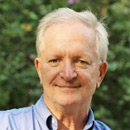
Steven Lawry is a Senior Associate in CIFOR’s Equity, Gender and Tenure research program. The views expressed are his own.
In addition to the blog titled “Shaping up forest and landscape restoration initiatives,” I read the paper on which the blog is based, entitled, “Co-Creating Conceptual and Working Frameworks for Implementing Forest and Landscape Restoration Based on Core Principles.”
Thanks to Forest News for making these materials available.
The authors do a good job of setting out the barriers to effective forest and landscape restoration (FLR), including limited national and local level capacity, an attachment still to strategies based on monocultural plantations, limited finance, weak institutional alignment across public, private and community actors, and the complexity of the landscape approach itself, among many, many other constraints.
But they don’t make the case that another FLR conceptual framework is in itself capable of resolving these issues, noting themselves many other FLR conceptual frameworks are already available from the International Union for Conservation of Nature, the U.N. Food and Agriculture Organization and other agencies, and citing 23 FLR resource documents in Table 2 of the paper.
Still, the paper offers up another conceptual framework, when what might be of greater immediate value is research that brings us closer to an understanding of the experience of implementing FLR in practice.
After all, FLR has been a topic of great interest and investment in the international donor and research communities for 20 years. And as the authors point out:
“Well-documented case studies of FLR are lacking. Few studies clearly document the evidence base for the effectiveness, outcomes, and impacts of FLR interventions.”
Surely, there are watershed or landscape-level experiences with FLR (or FLR-like initiatives) that merit study, and from which relevant general lessons can be drawn.
Donors, governments and researchers need to get beyond plans and concepts, and start providing practical incentives and direct support to people who use and rely on forests and other natural resources, and who want to ensure the future sustainability of their ecosystems and communities.
Seemingly endless planning and conceptualizing suggests, perhaps, that donors, planners and researchers lack confidence in their own ideas, and are never quite ready to see them tested in the real world.
Aldo Leopold, the American forester and humanist wrote in 1942 in an article entitled “Land Use and Democracy,” published in Audubon Magazine:
“[We] deal with bureaus, policies, laws, and programs, which are the symbols of our problem, instead of with resources, products, and land-users, which are the problem. Thus we assuage our ego without exposing ourselves to contact with reality.”
If we don’t start learning from the experience of the “real world” with FLR soon, the intended beneficiaries might start asking some hard questions about what all the excitement, and expense, was about.
We want you to share Forests News content, which is licensed under Creative Commons Attribution-NonCommercial-ShareAlike 4.0 International (CC BY-NC-SA 4.0). This means you are free to redistribute our material for non-commercial purposes. All we ask is that you give Forests News appropriate credit and link to the original Forests News content, indicate if changes were made, and distribute your contributions under the same Creative Commons license. You must notify Forests News if you repost, reprint or reuse our materials by contacting forestsnews@cifor-icraf.org.













